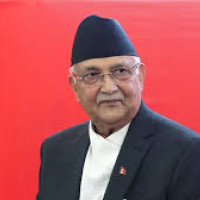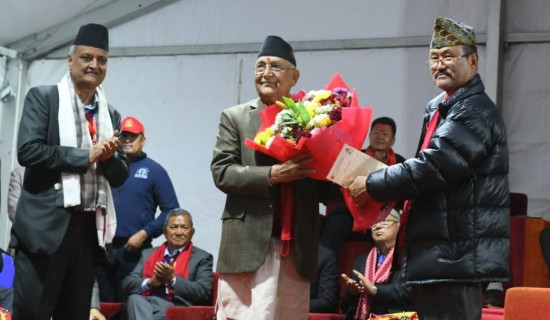- Friday, 19 December 2025
Time To Redefine Haritalika Teej
Traditionally, it is said that Teej is particularly a women's festival. I have been observing the celebration of this festival since my childhood. During this period, I have experienced a lot of changes. However, the mythology and definition related to Teej remain the same. Mythologically, Teej, also known as Haritalika Teej, is associated with Goddess Parvati. To cut a long story short, Parvati was in deep love with God Shiva, so she wanted him as her husband. For this, she went to a forest and performed penance and fasted for many days. Eventually, her wish was fulfilled. Since then, Hindu women started to fast on the occasion of Teej, praying to Lord Shiva to find a husband like him. This story suits the unmarried girls, so the married women fast for the longevity and prosperity of their husbands. I think we have to test the truth of this story at present.
By definition also Teej is also associated with women. It is celebrated in some parts of India and Nepal. The Indian people celebrate the festival in their way, but in the context of Nepal, it should be celebrated for two days - 'Dar day' and 'Teej day.' In the past, Teej was celebrated just like this. The married women used to be invited to their maternal home for a big celebration. It was a time of reunion with their relatives and friends. The women would feel free from the domination of their mothers-in-law and sisters-in-law at the husband's home. They would gather together and eat different kinds of delicious food on the Dar day and they would fast, worship Lord Shiva, sing and dance as a Teej celebration.
Teej songs
Now the time has changed completely, and so has the way Teej is celebrated. Then why define it in the same way as it was in the old days? When Teej approaches, there come different Teej songs in the market. These songs also reflect the society of the particular time. In my mother's generation, women used to sing sangini to express their feelings. The first commercial song that I heard was 'Teejako rahar ayo bari lai...' from a Nepali movie 'Kanyadan', which was released in 1991. This song explains the condition of Nepali women at that time, such as '...birsera ajalai karkare sasu, amaju nandale dieka aashu...' This song has very little or no implication in today's society. After this song, there came countless Teej songs which express women's sorrows, happiness, freedom, rights, or their empowerment.
But in most of the songs, only women are highlighted. I wonder why it is so. On the one hand, we talk about gender balance, and on the other, we segregate ourselves in the women's sect on occasions like Teej. The popular singer Durgesh Thapa may also have realised this inequality between men and women, so he wrote and sang a song 'Hami pani nachnu parchha bicha bichama...' five or six years ago. Durgesh has tried to be inclusive through this song, which is a high demand of contemporary society.
The scenario of the Teej celebration has massively changed these days, particularly in the urban and suburban areas. The two-day celebration has been extended to two months. Many people complain about this; I am also on the same page. But nobody can do anything because this change is inevitable, as the condition of women is not the same as in the past years. Earlier, most women were housewives who would always be looking forward to opportunities to come out of the house. Teej would provide them with such an opportunity to go to their maternal home to celebrate the festival.
On the contrary, these days they women are affiliated with one or another institution; some even have their affiliation with multiple institutions. Because of this, a trend has been developed to have the Dar party only one day is not enough. In addition, the women of this age are not dying to visit their maternal home in search of freedom. They have already been free from their in-laws' domination because they either earn their own money by doing one or another sort of job or their husband is in the foreign employment.
Thinking critically
When it comes to fasting, most of the women these days do not fast as strictly as women used to in the old days, when they used to fast without even drinking water. This cannot be possible these days. Because of different health issues, abstaining from food for an extended period has become risky. Furthermore, the women have become capable of thinking critically, and they do not believe that their one-day fasting brings longevity to their husbands. They simply fast and worship Lord Shiva for the welfare of the family or their mental peace.
Anybody can do this regardless of being a man or a woman. A lot of men have also started to fast on the day of Teej. Therefore, it is not a good idea to attach Teej only to women. There must be an equal participation of men and women in Dar parties, Teej fasting, singing or dancing. After all, Durgesh Thapa is right when he sings 'Didi baini matrai nachchhan jaile pani Teejama. Hami pani nachnu parchha bichcha bichchama....' In my opinion, Teej should be redefined as it is a festival of all Hindu people instead of defining it as a festival of women alone.
(The author is the Director of Vidya Shilpa Academy, Damak, Jhapa.)

















